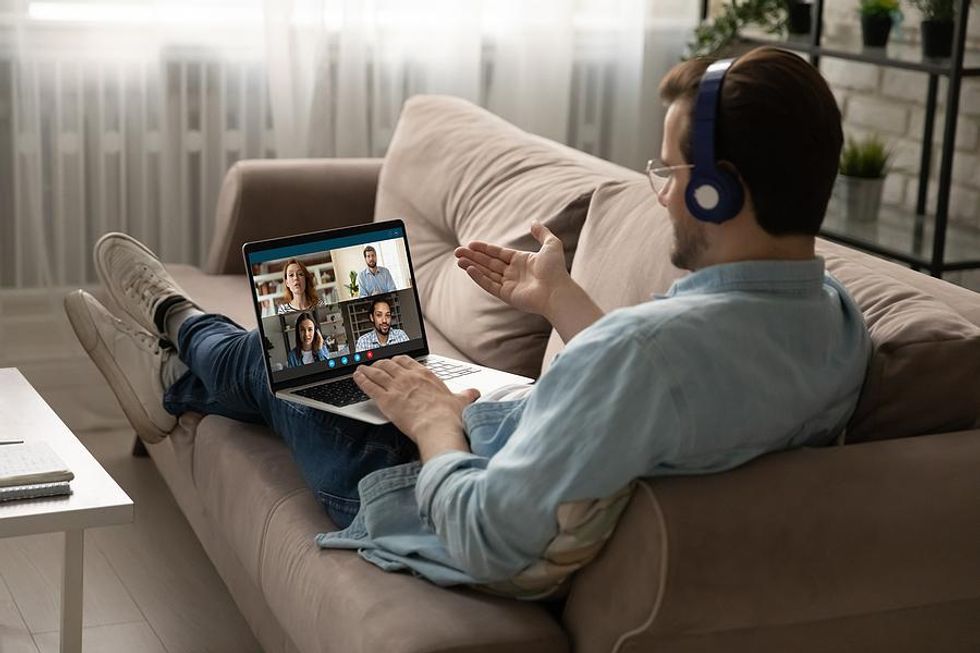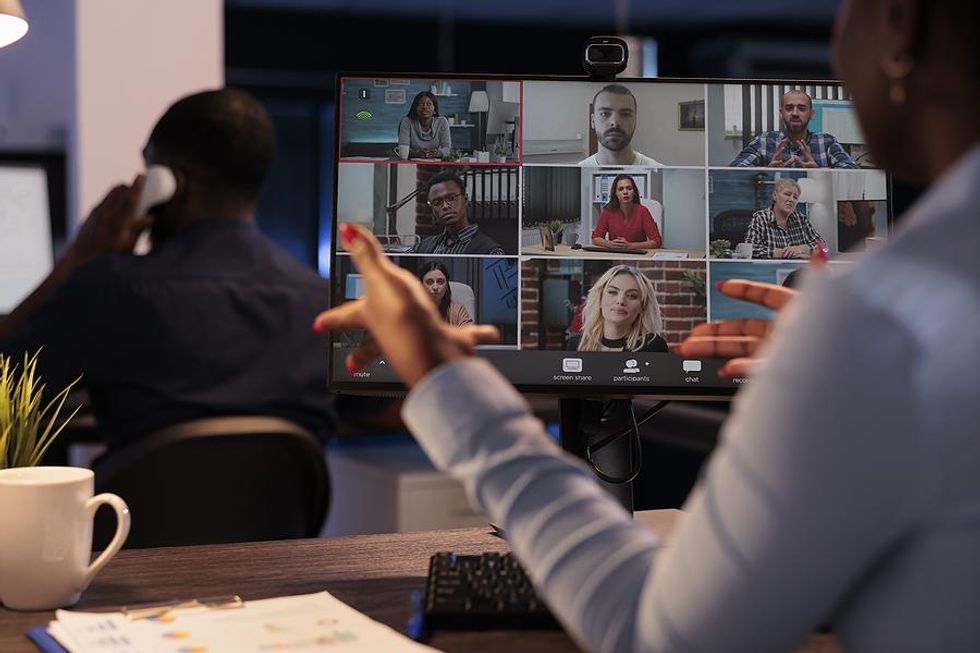Executive Spotlight: How Leaders Should Measure The Effectiveness Of Their Remote Workers

As a leader in today's modern workplace, you have to be prepared to manage hybrid, remote, and in-office employees. The success of a company depends on good management, which includes the ability to accurately measure the effectiveness of employees and make changes as needed. But the traditional ways of measuring an employee's effectiveness don't take into consideration how the workforce has changed since 2020 with the rise of remote work.
We recently asked our executives how they think leaders should measure the effectiveness of their remote employees.
Here are their responses...
Ana Smith, Talent Architect & Global Learning Strategist
Measuring effectiveness from remote employees can be very tricky, especially considering that 40% of leaders acknowledged in a study conducted by Harvard in 2020 that they were not prepared to manage remote employees and 41% struggled to keep their teams engaged.
Defining what's a priority and what effectiveness looks like becomes fundamental. It has left managers and leaders unsure about how the best work gets done. Therefore, it is not a huge surprise that a lot of managers would prefer their teams to come back to work in the office.
Besides clearly defining what effectiveness looks like, its transparency to all involved, and how it is measured and improved consistently, it becomes key for managers to quickly figure out the best way to work with their employees, making them feel understood and supported and not micromanaged.
Ana Smith helps people & organizations achieve their full talent potential by developing and co-creating people strategies and customized solutions, and turning them into impactful outcomes and collaborative relationships, using coaching as the "red thread."
John Schembari, Senior Education Executive

Image from Bigstock
Ana is correct. Evaluating the effectiveness of remote workers comes down to whether or not priorities have been met. It's less about doing time, say 9 to 5 Monday through Friday, and should be much more about impact whether that impact occurs over a long or short period of time, and whether at 9 am or 9 pm. When evaluating remote workers, organizations would be wise to, yes, define priorities but also determine what success metrics for those priorities will be. In defining success, for instance, I'm a big fan of goal setting and using SMART criteria—i.e., is the goal specific, measurable, attainable, relevant, and/or timely?
Client/project management software can also be used when there are multiple remote workers working on the same initiative so that there is clarity around each person's role and communication as to how each person's part fits into the project as a whole. This is where benchmark/milestone data can also be recorded along the way to indicate how well remote workers are making progress toward organizational goals.
John Schembari is a current K-12 teacher/school leader academic improvement coach and former school building and district administrator. He loves to draw, travel, swing dance, and read nonfiction.
Miroslav Jasso, IT & Innovation Management

Image from Bigstock
There are areas and positions where remote working was preferred for years if not decades. Information technology as an example serves well here. Measuring the effectiveness of IT service desk employees is easy. KPIs like number of tickets handled orfFirst instance resolution rate come immediately to mind. Your agile software developers can be measured based on the length of their sprints or the size of the backlog. In many cases IT teams are to a large degree remote and distributed among locations, countries, and even continents.
In general, any position with clearly defined KPIs can easily be measured for effectiveness, no matter the location. In-site, remote, distributed… numbers do the trick. Where remote working is leaving much room for effectiveness decrease is the soft side of work—relations, knowledge sharing, team spirit, willingness to help and support. Even if not immediately visible, those qualities have a decisive impact on overall effectiveness in the long run.
Miroslav Jasso is an information technology & innovation executive with 22+ years of experience in the development, continuous improvement, and delivery of state-of-the-art IT services across automotive, finance systems, and retail businesses. He has managed teams of 5-100+ with budgets of $1M-$15M+.
Michael Willis, Sports Business Operations Executive

Image from Bigstock
Measuring remote workers' effectiveness is no different from having workers present on-site. Having timely expected deliverables will be the most critical test of commitment. If you know the quality of the people on your team, you won't have to worry about the work not getting done.
Sure there are monitoring tools out there to see log-in times and activity.
But as a business professional trying to run a business, I'd rather spend the time making the company better to raise revenues or creating new ways to compete with my competitors.
Michael Willis has 18+ years of experience working with accounting & sports organizations and has managed P&Ls of $10M - $125M+ with budgets of $3M-$50M+. He worked for the NFL for 22 1/2 years, mainly with the game officials working on the financial/accounting side of the business.
Andrea Markowski, Marketing Executive
 Image from Bigstock
Image from BigstockIf you’re asking how to measure the effectiveness of remote workers, you’re asking the wrong question.
Go back and subtract the word “remote.” There. That’s the right question.
There should be no fundamental differences between how you measure the success of a remote worker vs. a hybrid worker vs. an in-person worker. Too many managers get caught up in the thought of a remote worker being somehow incredibly different.
If anything, remote workers most likely require more thoughtful management. That includes you as a manager keeping an eye on equity when handing out resources, social opportunities, and high-profile projects to remote vs. in-person workers.
Is the person meeting their goals? Are they growing in their role? Are they helping to move the organization forward? Remote or not, questions similar to these are what you should focus on.
Andrea Markowski is a marketing director with specializations in strategy development, digital tactics, design thinking, and creative direction. She has superpowers in presentations and public speaking.
Don Schulz, Senior Operations & Commercial Real Estate Executive

Image from Bigstock
I appreciate and agree with people's comments so far. The concepts of defining success, using measurable KPIs & SMART goals, and measuring workers in the same positions in a consistent manner whether they are remote or not all make sense. There is however a range of difficulty in assessing effectiveness depending on the specific function of each FTE and how quantifiable vs. qualitative one can make the measurement of their role. That said I would like to add to the discussion the concept of engagement which is often a leading indicator of one's effectiveness and I've found much harder to measure.
A couple of years ago I took on a new role as COO of a national real estate project management company one month before COVID-19 restrictions were put into place. I had to quickly adjust to managing fully remote in a company I had just joined and with people I barely knew. While we were able to successfully implement many of the effectiveness measurement tools mentioned above and felt we had a good feel for individuals' overall effectiveness, we soon learned that it was people's engagement we had to get our arms around. That took some time. We retained an outside consultant/survey company to measure the engagement of all employees and made it an annual occurrence.
My summary point is that while measuring employee effectiveness (remote or in person) is an ongoing, more daily requirement, complementing that with an annual or semi-annual measurement of employee engagement is often a good thing that can bring many insights when laid next to effectiveness data.
Don Schulz is a 25+ year commercial real estate executive & COO. On the personal side, he likes to ski, hike, golf, and run, and is an occasional homebrewer.
How do you think leaders should measure the effectiveness of their remote workers? Join the conversation inside Work It Daily's Executive Program.
- How Executives Can Successfully Motivate Their Teams - Work It Daily ›
- 5 Ways To Get More Challenging Tasks At Work - Work It Daily ›
- Easy Tips For Building Productive Workplace Relationships - Work It ... ›
- 3 Ways To Emphasize Your ROI On Your Resume - Work It Daily ›
- How Executives Can Boost Team Morale In The Workplace - Work It ... ›
- Why You Should Keep Your Remote Job - Work It Daily ›
- Everything You Wanted To Know About KPIs - Work It Daily ›
- 3 Things Corporate Real Estate Portfolios Need To Talk About - Work It Daily ›
- How To Measure Success Beyond Just Hitting Goals and Numbers - Work It Daily ›

 Bigstock
Bigstock Bigstock
Bigstock Bigstock
Bigstock


